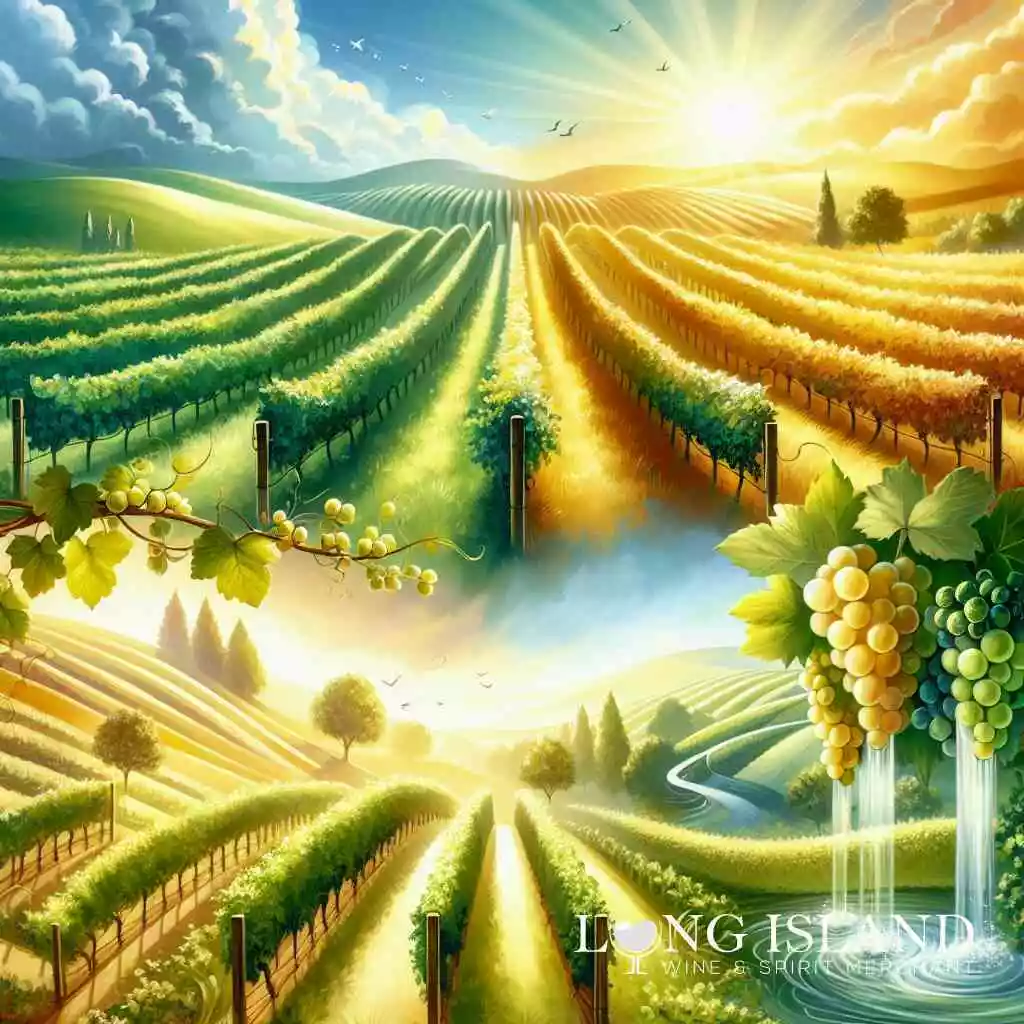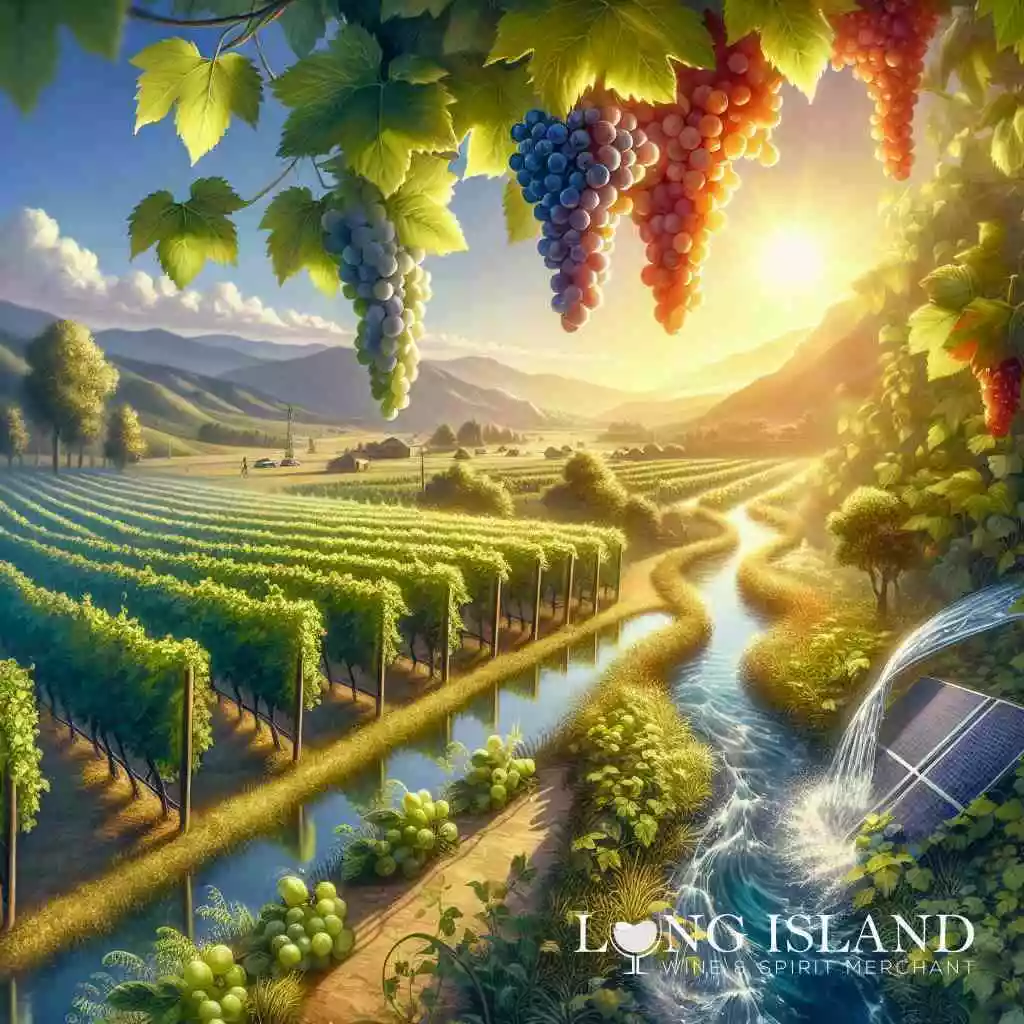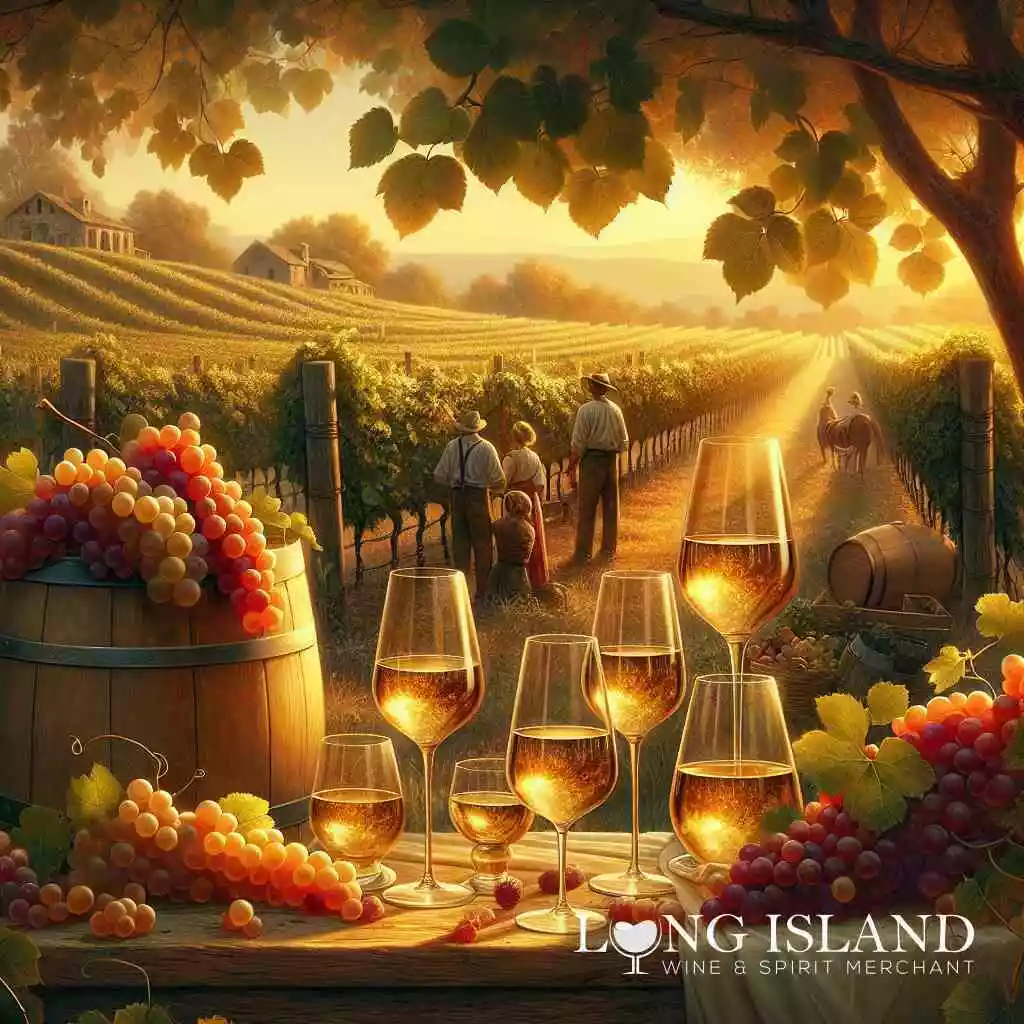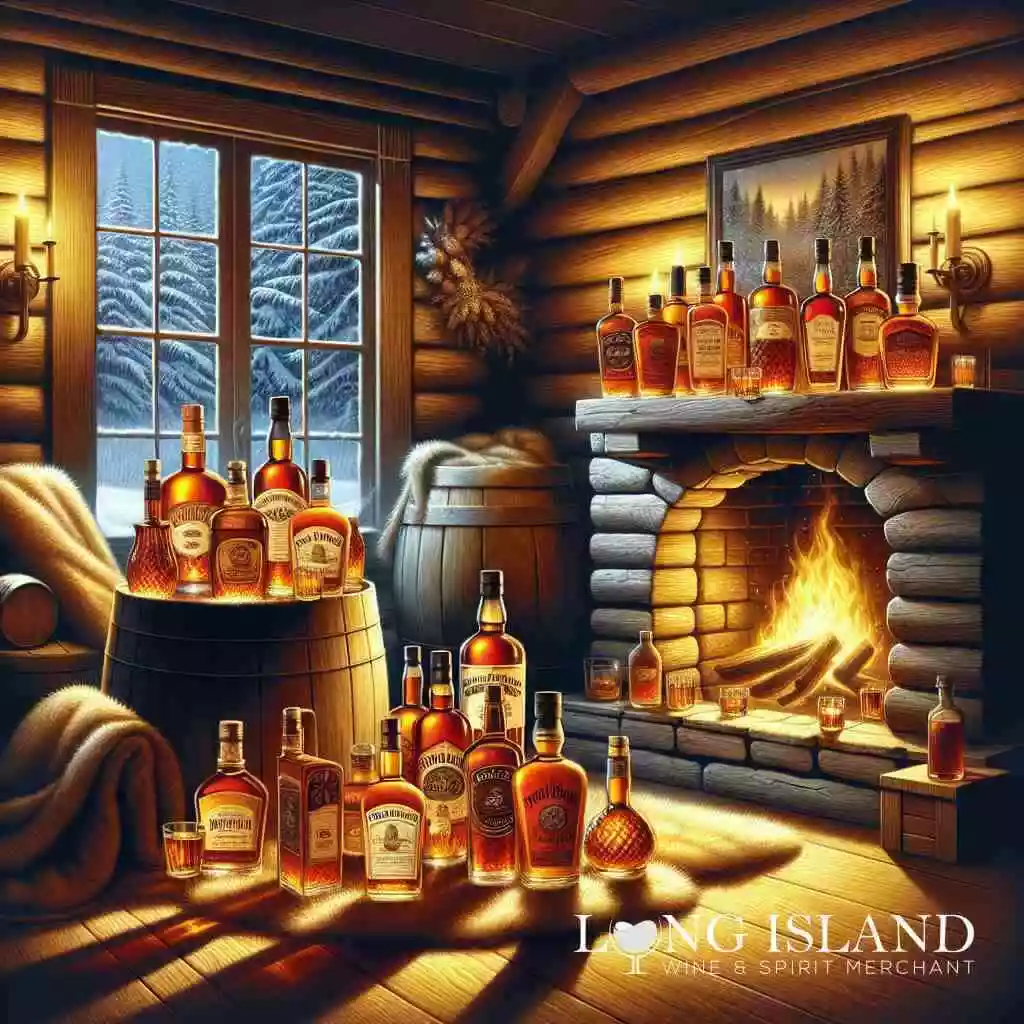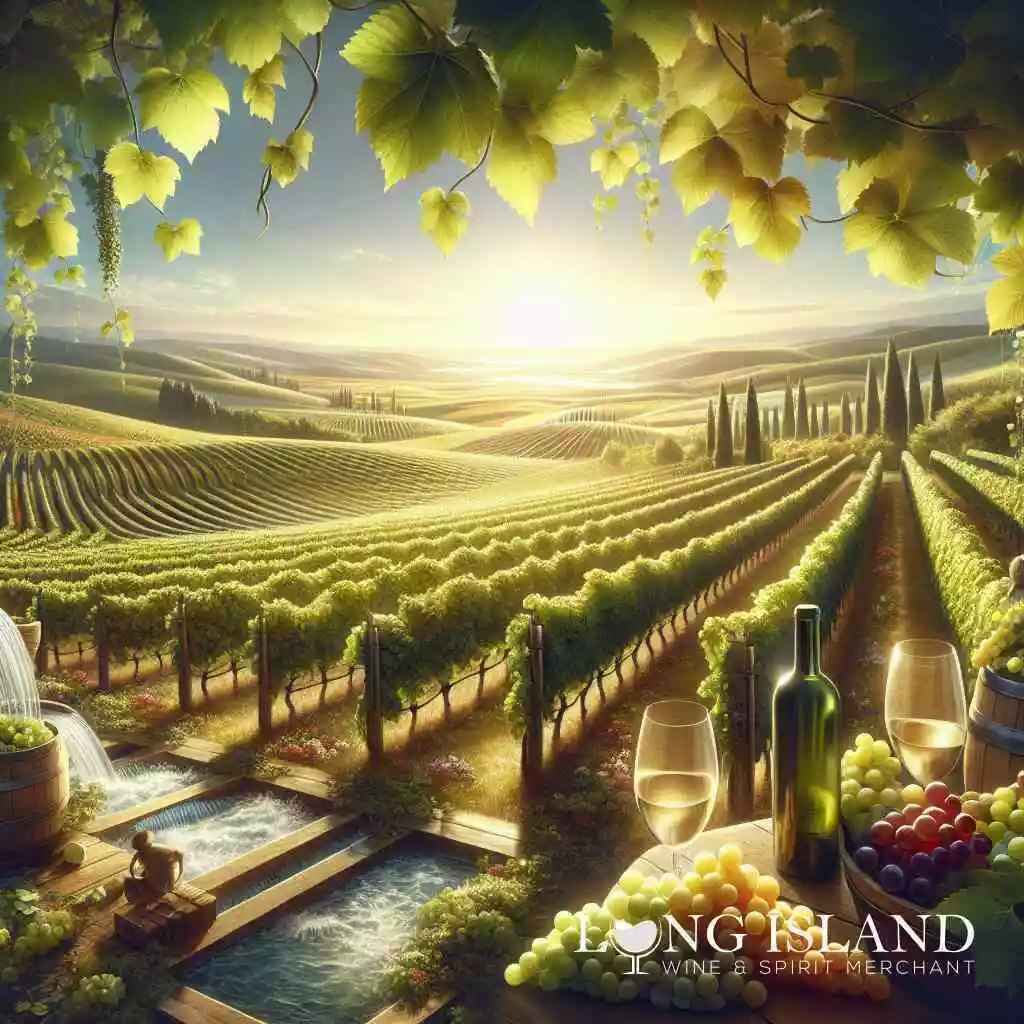
The Difference Between European and American Wine Preferences
October 30, 2024
Introduction: A Toast to Cultural Divergence
The Influence of European History on Wine Preferences
In Europe, wine has long been intertwined with history and tradition, shaping an enduring cultural preference for specific wine styles. The continent’s rich heritage of winemaking, dating back to ancient Roman times, has established a profound appreciation for terroir. European wine preferences are deeply rooted in regional characteristics, with renowned wine regions like Bordeaux, Burgundy, and Tuscany each offering distinct varieties and flavors. As a result, European palates often favor wines that express the unique terroir of these famous vineyards. This longstanding history of wine cultivation has fostered a sophisticated taste for classic varietals like Cabernet Sauvignon, Pinot Noir, and Chardonnay, revered for their balanced structure and complex flavors.
From New World Beginnings: American Wine Evolution
Across the Atlantic, the story of American wine is one of innovation and modernity. Unlike Europe, where tradition dictates wine preferences, American wine tasting represents a dynamic evolution, blending diverse influences to create something unique. Historically, American wine regions, particularly California’s Napa Valley, have played pivotal roles in the New World wine renaissance. American winemakers embrace experimentation, incorporating bold varietals, inventive blends, and progressive techniques. This adventurous spirit is indicative of the broader American ethos of innovation and reinvention within the wine industry. As a result, American wine preferences often lean towards bolder, fruit-forward wines that showcase creativity and adaptability in winemaking.
Why Understanding Wine Preferences Matters
Understanding the nuances between European and American wine preferences is crucial for enthusiasts and connoisseurs alike. These differences not only reflect cultural tastes but also influence global wine trends and market choices. In an increasingly interconnected world, appreciating these distinctions can enhance one’s wine exploration journey, particularly when considering the impact of geography on wine flavor elements like aroma and body. This comprehension aids in crafting thoughtful wine pairings, choosing suitable wines for varied occasions, and deepening one’s appreciation of the complex world of wine. As both markets continue to evolve, recognizing subtle preferences enables a richer and more informed wine experience.
Decoding Terroir: The Soil and Soul of Wine
Terroir Influence: A European Obsession
European wine preferences are often guided by a deep respect for terroir, which is the cornerstone of Old World winemaking culture. Terroir refers to the unique combination of soil, topography, and climate that imparts distinctive characteristics to wine produced in a specific region. European winemakers have an almost reverential approach to terroir, believing it to be the soul of their wines. This focus results in wines that reflect subtle nuances, with vineyards across Bordeaux and Burgundy celebrated for their terroir-driven expressions. As such, European wines tend to prioritize regional fidelity, offering an intricate tapestry of flavors, aromas, and textures that speak to their origins.
How American Winemakers Interpret Terroir
American wine regions, such as the dynamic Napa Valley, have a more experimental approach to interpreting terroir. While geography undoubtedly influences winemaking, American vintners often balance terroir with innovative methods. This blend of tradition and creativity leads to an eclectic mix of wines that showcase American wine-tasting prowess. Here, there is less pressure to adhere to historical expectations, allowing winemakers to innovate while still acknowledging the unique characteristics of their land. Consequently, American wines frequently demonstrate a bold personality and diverse flavor profiles, aligning with the adventurous American spirit.
The Role of Climate and Geography in Wine Flavor
Climate and geography play crucial roles in shaping the impact of geography on wine flavor. Diverse climates, from Mediterranean-like conditions in Southern Europe to the cooler temperatures of Germany, significantly affect grape development and flavor profiles. In comparison, American wine regions also benefit from geographic variety, with areas like California experiencing a significant range of microclimates. These climatic differences yield distinctive varieties and styles unique to each region. Understanding these elements is essential for wine enthusiasts seeking to explore an extensive selection of wines reflecting their environmental influences, especially when considering how geography affects wine taste.
Old World vs New World: A Symphony of Varietals
Classic European Grapes: Icons of Tradition
European grapes symbolize centuries of wine evolution, with classic varietals firmly embedded in the cultural and viticultural heritage across the continent. Regions such as Bordeaux, Burgundy, and Tuscany have been cultivating these iconic varieties with precision and care, consistently producing wines recognized worldwide for their elegance and complexity. Grapes like Cabernet Sauvignon, Merlot, Pinot Noir, and Chardonnay are not merely varieties but emblems of European wine regions. They carry the legacy of historical viticultural practices, honed equally by tradition and geographic influences. The classics possess a balanced structure and sophisticated profile that reflect centuries of refined winemaking, often governed by strict appellation regulations, fostering a consistent standard of excellence and quality.
American Innovation: Exploring Varietal Diversity
American vineyards, particularly in regions such as California, Oregon, and Washington, celebrate an adventurous and liberal approach to winemaking, unrestrained by centuries-old traditions. This freedom has allowed American winemakers to experiment with wine varietal diversity, endeavoring beyond the conventional to create new and exciting blends. This adventurous spirit complements the American wine industry’s willingness to explore uncharted territories in winemaking. Aside from famous Cabernet Sauvignon and Chardonnay, American ventures into Zinfandel, Petite Sirah, and even unexpected grape combinations reflect a diverse portfolio that embraces innovation. The result is a dynamic range of wines that cater to modern palates and showcase new expressions, tapping into a global market eager for unique tasting experiences.
Varietal Characteristics and Global Palates
Understanding varietal characteristics is essential in appreciating the global appeal of wines from different continents. Classic European varieties present nuanced flavors and aromas that often unveil complex profiles rooted in terroir nuances. In contrast, American varietals offer a more robust and fruit-forward expression, appealing to the preferences of contemporary wine lovers. This diversity in characteristics fascinates wine enthusiasts worldwide, offering an expanded palette of options, as noted in the Ultimate Guide to New York Wine Tasting in 2024. As a result, the evolving wine industry continues to shape global palates, promoting an appreciation for the intricate balance of flavor and aroma each varietal can present, as discussed in Exploring the Best Gins for a Cozy Autumn Evening. From wine tastings to wine aroma and body explorations, the wine community seizes every opportunity to explore these rich and varied profiles that define the symphony of Old World and New World wines.
Aromatic Elegance and Flavor Profiles
Understanding the Wine Aroma Profile
The aroma of a wine is its first impression, a sensory signal that offers clues about the quality and character of what lies ahead. European wines often exhibit a bouquet that is complex and layered, with aromas that relate closely to their European wine regions. These may include earthy notes, hints of spice, or subtle fruit undertones. In contrast, American wines tend to possess a more pronounced fruit-forward bouquet reflecting their New World style. Understanding these differences in aroma profiles helps wine enthusiasts appreciate the breadth of olfactory experiences available, offering a deeper insight into the art of winemaking. Aroma not only influences flavor perception but also enhances the overall tasting experience, inviting wine lovers to embark on an exploration of nose and scent.
Wine Body Differences: A Balancing Act
Wine body refers to the weight and texture perceived on the palate, influenced by factors such as grape varietal, alcohol content, and winemaking techniques. European wines are often renowned for their medium to full-bodied characteristics, exemplifying a harmonious balance resulting from traditional wine production methods. These wines provide a smooth mouthfeel intertwined with complexity. Meanwhile, many American wines, especially those from regions like Napa Valley, are known for their robust, full-bodied personas. These wines make a bold statement, often captivating those who favor intensity and richness. Recognizing the nuances of wine body differences aids consumers in selecting wines that best match their preferences, whether it is a lighter touch or a more profound sensory embrace.
Unveiling Wine Acidity Levels Across Continents
Acidity in wine contributes to its freshness and vivacity, balancing sweetness and enhancing the wine’s overall appeal. European wines often feature higher acidity levels, a reflection of the cooler climates found in traditional viticultural areas. This heightened acidity provides a pivotal role in aging potential, ensuring wines can gracefully develop over time. In contrast, American wines, especially those from warmer climates, might display softer acidity, enhancing their immediate drinkability. This aspect is significant in adjusting wine for food pairings, where acidity can cut through rich dishes or complement lighter fare. Understanding these subtle variations in acidity levels across continents enriches one’s appreciation for the diverse world of wine, paving the way for astute wine-food pairing advice.
The Art of Aging and Oak Barrel Mystique
Wine Aging Potential: Old World Wisdom vs New World Flair
In the world of wine, aging potential stands as a testament to a wine’s capacity to improve over time. European wineries often embrace age-old techniques, creating wines with depth and complexity that mature gracefully in cellars. The wisdom of Old World wineries lies in their dedication to tradition, producing wines with intricate layers that reveal themselves over the years. These wines often boast a harmonious blend of tannins, acidity, and flavors that evolve, enhancing their appeal as collectors’ items. Meanwhile, New World wineries in America take a different approach, exhibiting a flair for innovation that influences aging potential. Here, winemakers might employ technology and new methodologies to produce young wines with immediate drinkability while experimenting with aging techniques that align with American consumers’ dynamic tastes. The blend of tradition and modernity presents a fascinating landscape ripe for exploration, echoing the diverse preferences seen in American wine regions like California and Oregon.
Oak Barrel Usage: Tradition versus Innovation
In the realm of winemaking, the use of oak barrels is a nuanced art form that significantly impacts the finished product. European vintners tend to adhere to time-honored methods, crafting wines in barrels that impart subtle, layered notes of vanilla, spice, or leather. This traditional approach elevates the natural characteristics of varieties native to Europe, enhancing the texture and complexity synonymous with European wine preferences. American winemakers, on the other hand, boldly integrate both tradition and innovation in their oak barrel practices. Embracing alternative aging methods, such as stainless steel or hybrid oak vessels, is common in regions like Napa Valley. The flexibility to experiment allows American wines to capture a broader spectrum of flavors, offering unique expressions that cater to the adventurous palates of New World drinkers. This dynamic approach reflects the American spirit of reinvention, balancing respect for heritage with a fearless embrace of modern viticultural advancements.
The Impact of Vintage on Wine Character
Vintage plays a pivotal role in shaping the character and quality of a wine, often dictating its market perception and value. In Europe, a strong reverence for tradition means vintage is considered vitally important, influencing not only taste but also a wine’s prestige and price. Factors such as climate conditions in a particular year can drastically affect flavor profiles and aging potential, making vintage selection a crucial element for connoisseurs who prioritize European wine preferences. The American wine market also acknowledges the significance of vintage but often views it through a pragmatic lens. Here, the focus might lean towards consistent quality and innovation in production methods, allowing vintners to mitigate less favorable seasonal impacts and maintain a stable wine character. This adaptability illustrates a shift in the wine industry, where the aim is to fulfill both the discerning preferences of wine collectors and the everyday enjoyment of casual consumers. By harnessing the strengths of each approach, both regions showcase a brilliant tapestry of wine character defined by their unique interpretations of vintage impact.
Cultural Influence: Wine on the Table
European Wine Regions Defined by Culture
European wine regions are steeped in culture, influencing wine preferences deeply rooted in tradition. Each region, from the hills of Bordeaux to Tuscany’s rolling vineyards, offers a unique tapestry of varieties synonymous with its cultural heritage. This influence extends beyond mere flavor profiles, intertwining with culinary traditions and regional customs. Wine in Europe is often seen as a complement to dining, a practice that underscores the intricate relationship between wine and its place at the table. The adherence to cultural traditions ensures that these wines remain archetypes of European sophistication, attracting global enthusiasts keen on understanding European wine preferences and tasting history in every sip.
American Wine Regions Shaping Modern Preferences
In contrast, American wine regions act as pioneers of modern tastes, driven by a culture of innovation and diversity. Regions like Napa Valley have become synonymous with experimentation, crafting diverse varieties and bold blends that mirror America’s melting pot culture. Each state, from California to Washington, infuses its cultural nuances into its wines. This modern approach caters to evolving global palates, offering wines that are both accessible and avant-garde. Such dynamic influences from American wine regions lead to a broader acceptance of eclectic wine choices that resonate with contemporary wine lovers eager for novel experiences.
Wine Food Pairing Ideas from Both Worlds
The art of pairing wine with food is a brilliant fusion of Old World tradition and New World innovation. European pairings often draw from centuries-old practices, marrying red wine with hearty stews or white wine with delicate seafood, capturing the essence of regional cuisine. Conversely, American pairings embrace versatility and creativity, encouraging exploration beyond classic combinations. This cultural blend introduces exciting possibilities, such as zesty Californian Zinfandel with spicy barbecue or Oregon Pinot Noir with fresh salmon. As wine pairing trends increasingly blend tradition with innovation, they invite enthusiasts to discover fascinating new horizons in gastronomy, making wine an integral part of culinary exploration, just as Order Alcohol Online encourages wine lovers to explore Long Island wines.
Sustainability in a Glass: The Green Crusade
Sustainable Wine Practices in Europe
In Europe, sustainable wine practices have emerged as a priority for many vineyards aiming to preserve their historic landscapes and cultivation techniques. European winemakers embrace organic and biodynamic farming methods, reducing the use of synthetic chemicals and emphasizing natural vineyard maintenance. This commitment to eco-friendly practices mirrors a broader cultural respect for the environment, ensuring the longevity of cherished wine regions. Moreover, European regulations often underscore sustainability, encouraging adherence to organic standards that reflect the essence of Old World winemaking. These practices are fundamental to maintaining the authenticity and quality that European wines are known for, inviting connoisseurs and casual enthusiasts alike to explore wines shaped by a commitment to the environment.
Green Innovations in American Wine Production
Across the Atlantic, American wine producers are at the forefront of green innovations, blending traditional techniques with modern sustainability efforts. From California to New York, vineyards incorporate solar power, water conservation, and renewable energy systems to minimize their carbon footprint. The American wine industry is renowned for its forward-thinking approach, which embraces cutting-edge technologies to enhance sustainability in viticulture and production. By investing in eco-friendly infrastructure and organic winemaking processes, American wineries align with consumer demands for environmentally conscious products. This dynamic progression not only showcases the innovative spirit of New World wine regions but also highlights the industry’s role in championing sustainable wine practices worldwide.
The Consumer Demand for Eco-Friendly Wines
The growing consumer demand for eco-friendly wines has significantly impacted both European and American wine markets, reflecting a global shift towards environmental awareness. Wine enthusiasts increasingly prioritize sustainability, seeking products that affirm their commitment to the planet. As a result, wineries are prompted to adapt and highlight their green credentials, offering wines with transparent origins and eco-friendly certifications. This trend extends to the online marketplace, where platforms like Order Alcohol Online emphasize sustainable choices in their offerings, as illustrated by the Ultimate Organic Wine Buying Guide for 2024. The intersection of consumer awareness and producer responsibility creates a robust market for wines that align with ethical and environmental values, fostering a deeper connection between wine lovers and the earth-friendly practices that sustain their favorite vintages. Explore the impact of sustainable wine practices on today’s wine landscape to discover an array of eco-conscious options.
Conclusion: Bridging the Old and New Worlds
Shared Passion, Divergent Paths
Wine enthusiasts across the globe share a common passion for discovering and indulging in the complexities of wine despite diverging preferences between European and American styles. These diverse preferences reflect more than taste-they embody cultural identities and historical legacies. While European wines often symbolize a deep-rooted connection to tradition and terroir, American wines resonate with innovation and a spirit of experimentation. This shared passion enriches the global wine community, fostering a vibrant exchange of ideas and practices. As wine lovers explore these divergent paths, platforms like Order Alcohol Online serve as gateways, offering a Long Island wine selection that marries tradition with modernity, catering to eclectic tastes both near and far.
The Future of Wine Preferences and Market Trends
The future of wine preferences and market dynamics is as fluid as the wines themselves, influenced by evolving consumer tastes and technological advancements. Both European and American wineries continue to innovate, diversifying offerings to meet the desires of a more informed and adventurous clientele. As sustainability in wine production gains traction, vineyards on both continents are poised to adapt, meeting the increasing demand for eco-friendly options. Additionally, digital retail platforms such as Order Alcohol Online are transforming the landscape, making wine shopping in Northgate Long Island more accessible than ever. This shift not only highlights the changing patterns of consumption but also underscores the importance of adaptability in securing the future of the wine industry, as explored in How Order Alcohol Online Changes New York’s Liquor Landscape.
A Cultural Journey Through Wine Exploration
Embarking on a cultural journey through wine invites enthusiasts to traverse continents and history, discovering the nuanced narratives each bottle holds. From the storied vineyards of France and Italy to the pioneering estates of California and Oregon, wine exploration is an odyssey of taste, tradition, and innovation. An appreciation for both Old World and New World wines cultivates a richer understanding of the artistry involved in winemaking. This exploration is made seamless by resources like Order Alcohol Online, providing an array of wine education resources that empower consumers to deepen their knowledge and refine their palates. As you pour a glass and savor the journey, wine becomes a bridge, connecting disparate cultures through shared moments of discovery and delight.
Frequently Asked Questions
Question: What are the main differences between European and American wine preferences?
Answer: The main differences between European and American wine preferences lie in tradition, innovation, and flavor profiles, as discussed in The Difference Between Merlot and Cabernet. European wines often emphasize terroir, reflecting their place of origin with a focus on classic varietals like Cabernet Sauvignon and Pinot Noir. These wines are typically characterized by subtle complexities and a balance of acidity and tannins stemming from centuries-old winemaking traditions. In contrast, American wines, particularly those from regions like California’s Napa Valley, embrace a more innovative approach, often resulting in bold, fruit-forward wines with varied flavor profiles. American wineries take advantage of diverse varietals and experimental blends, offering consumers adventurous and modern tasting experiences. At Order Alcohol Online, we celebrate these distinctions by providing a wide selection of both European and American wines, ensuring our customers can explore and enjoy the rich tapestry of global wine culture.
Question: How does the concept of terroir influence European and American wine preferences?
Answer: Terroir significantly influences wine preferences by imparting unique characteristics to the wines based on their region of origin. In Europe, the concept of terroir is deeply entrenched in the winemaking tradition, with each wine closely tied to the geographical features, climate, and soil of its region. This results in wines that emphasize subtle nuances and regional fidelity, such as Bordeaux’s rich reds or Burgundy’s nuanced Pinot Noirs. American winemakers, while acknowledging terroir, are often more experimental, balancing traditional influences with innovative methods. This fusion creates bold wines that still honor their regional roots but also embrace the New World ethos of reinvention. Order Alcohol Online offers a diverse range of wines that celebrate these terroir-driven expressions, enabling wine lovers to savor the unique qualities that terroir brings to each bottle.
Question: How does Order Alcohol Online showcase both European traditional wine practices and American innovative techniques?
Answer: Order Alcohol Online showcases the synergy between European traditional wine practices and American innovative techniques through an extensive array of wines that cater to varying preferences. Our selection includes classic European wines known for their elegant structure and historical cultivation, such as Chianti from Tuscany or Bordeaux blends. These wines highlight centuries-old practices that prioritize terroir and varietal integrity, as detailed in Exploring the Richness of Bordeaux Red Wines. Simultaneously, we offer a wide range of American wines that reflect a modern, creative approach to winemaking, featuring experimental blends and bold varietals from regions like Napa Valley and Oregon. By providing this diverse portfolio, we ensure that customers can enjoy the best of both worlds, appreciating the timeless craftsmanship of European wines alongside the dynamic spirit of American innovation.
Question: What role does sustainability play in the selection of wines at Order Alcohol Online, and how does it reflect European and American trends?
Answer: Sustainability is a crucial factor in our selection of wines at Order Alcohol Online, reflecting the growing consumer demand for environmentally conscious choices. European winemakers often lead with practices like organic and biodynamic farming, ensuring the preservation of their historic vineyards while maintaining high-quality standards. American wineries, known for their innovative spirit, incorporate cutting-edge sustainable technologies, such as solar power and water conservation methods. Our online liquor store prioritizes wines that embody these eco-friendly practices, offering customers options that align with their ethical values and commitment to the environment. By choosing our sustainable wine selections, customers not only enjoy exceptional quality but also contribute to a greener future in viticulture.
Question: Can you provide wine food pairing ideas that highlight the differences between European and American wine preferences as discussed in The Difference Between European and American Wine Preferences?
Answer: Certainly! Wine food pairings can beautifully illustrate the distinctions between European and American wine preferences. European wines, with their balanced acidity and subtle complexity, pair wonderfully with traditional dishes like hearty French stews with red Bordeaux or Italian seafood pasta with a crisp Pinot Grigio. These pairings emphasize the cultural heritage and refined profiles of European wines. On the other hand, American wines, with their bold flavors and inventive blends, are perfect for more diverse and creative pairings. Consider pairing a robust Californian Zinfandel with barbecued ribs or an Oregon Pinot Noir with grilled salmon. These combinations highlight the adventurous nature of American wines, offering exciting and memorable dining experiences as outlined in The Best Whiskeys for Long Island Winters. At Order Alcohol Online, we provide guidance and a variety of options to ensure the perfect wine pairing complements every meal.
